If you’ve been wondering how you should teach economics to your 5th graders and/or 6th graders, you are in the right place.
When I was a student myself, instruction on economic principles was quite limited. So, I’m happy to see that most states now include economics, at least somewhat, in their upper elementary standards.
We all know that economics can be quite complicated, but when teaching upper elementary we get to keep it super simple!
Are you looking for upper elementary social studies/writing resources and ideas? I’d love for you to join my weekly VIP email club with no spam, just helpful tips, ideas, and resources!

Why do we teach economics in upper elementary social studies?
Economics – it’s important stuff, right?
Understanding basic principles of economics is part of a well-rounded education. Economics concepts touch nearly every academic area, including history, math, reading, and more.
For example, when studying Colonial America, students need to have a clear understanding of supply and demand because the need for cash crops, including tobacco, was swayed by supply and demand.

Key Ideas in Economics
Economics is a vast topic. Where do we start?
It’s easy to find yourself ‘in the weeds’ when teaching about economics, but it’s more manageable when you just focus on the key concepts.
When it comes to teaching upper elementary, here are the basic points to cover:
● Taxes
● The American Economy today
● Economics Throughout American History
● Resources, Supply, & Demand
● Global Trade & Interdependence
● Financial Decision Making
Taxes
Ben Franklin said, “In this world, nothing is certain except death and taxes.” He was so right!
Taxes vary based on where we live but we ALL pay them.
Taxes (federal, state, and local) can include income tax, property tax, sales tax, and more.
When individuals pay taxes, they contribute money that helps get goals accomplished and work completed in cities, states, and the entire country.
The American Economy Today
When people refer to ‘the economy,’ what exactly are they talking about?
It’s fairly straightforward: The economy is made up of buyers and sellers, also called consumers and producers.
Consumers buy things (McDonald’s sandwiches, purses, and millions of other items).
Producers, on the other hand, sell things (tangible items, like ketchup and cars, and services, like hairstyling and dog walking).
Jobs are crucial to the health of our economy. For this reason, the U.S. government keeps track of unemployment numbers throughout the country.
Our economy is known as a Free Enterprise System, which means the government does not have a lot of involvement.
In our Free Enterprise System, most resources are owned by individuals and not by the U.S. Government.
Economics Throughout American History
Just as our country has evolved since its beginning, so has our economy.
The original 13 Colonies were founded for religious reasons AND economic reasons. Most people coming to the New World wanted and needed to earn. This was fairly easy to do, though money itself didn’t exist yet.
During the Colonial Era, bartering was a common practice that allowed people to obtain food, clothing, and other supplies.
The 1792 Mint Act made it possible for the U.S. to begin creating its own currency. Coins were made first, followed by dollars. The creation of money made the exchange of goods and services significantly more convenient.
Later, during the Industrial Revolution, the basis of the U.S. Economy changed from agriculture to manufacturing. By the end of the 1800’s, the U.S. had become the world’s most industrialized nation.
Resources, Supply, & Demand
The term ‘resources’ refers to many different things.
Natural resources are found in nature, including light, air, water, plants, lumber, and etc. Some natural resources are renewable, while others are nonrenewable. Examples of nonrenewable resources include soil, coal, and gases.
Another type of resource is a human resource, also known as a worker or employee. Every business, whether public or private, needs workers in order to operate successfully.
A third type of resource is a capital resource. This type of resource is used to make things or provide services, like equipment, ingredients, and shipping materials.
Supply and demand have a huge impact on our economy. If resources are scarce, that means that there’s not enough supply and prices will increase. On the other hand, if resources are plentiful, prices will generally decrease.
If you’re looking for a ready to use, comprehensive, engaging Economics Unit, you should check this one out:
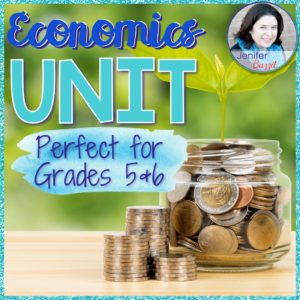
Global Trade & Interdependence
Global trade is just what it sounds like – trading all over the world. Global trade has been going on for centuries and has shaped world history.
Nations depend on one another for products and services. Trading with others includes importing and exporting goods and services.
Importing means bringing in goods and services, while exporting is just the opposite.
Helping Students Learn About Financial Decision Making
Perhaps the most important part of learning economics is the idea that students should be empowered to make responsible financial decisions in their own lives. Sure, our 5th and 6th graders may not have much money but they can be responsible with what they do have.
While students are young, the stakes are low. However, as they grow up, financial decisions become crucial, so let’s lay the groundwork now!
Careless decisions regarding money can have a lasting impact, as we all know.
Part of making good financial choices includes discerning between wants and needs. Once this groundwork is in place, it’s time to learn about setting personal financial goals, spending vs. saving, and using credit responsibly.

Teaching Economics: The Importance of Vocabulary
Vocabulary is an important part of learning about economics because many essential terms will be unfamiliar to students.
Our students’ comprehension will depend upon their ability to internalize the meaning of terms, such as renewable resource, property tax, producer, consumer, and etc.
Intentional instruction in specific terminology should be part of each lesson.

Help Students Connect Economics with Everyday Life
As with all instruction, making economics lessons relevant and meaningful will increase student engagement and learning.
Economics has countless connections to everyday life, including spending, saving, shopping, earning money, going into debt, and setting financial goals.
While it may not be appropriate to share economic situations from your own life, you can share economic principles that you’ve seen in action or economic decisions that you’ve noticed in general or in national news.
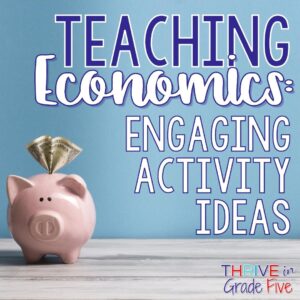
Teaching Economics: Engaging Activity Ideas
Most students in grades five and six have ample access to technology, which makes them eager consumers. Consumerism is a natural avenue for learning about economics. Here are some relevant, engaging activities for teaching about economics:
Plan a Party
- Set three budgets: small, medium, and large.
- Create a shopping list.
- Find items for each budget.
Ask An Adult
- Choose several economics principles for students to use in this activity. For example, you might want students to focus on needs vs. wants, supply and demand, taxes, global interdependence, and credit.
- Ask students to list the terms on notebook paper and leave plenty of space.
- Students will ask adults in their lives to give examples of how they’ve seen the principles in real life. I require my students to obtain two examples of each term.
- You may find that students have to explain some of the terms to adults. This is a great thing! Humans retain so much more information when they actually teach it!
- Have fun! This activity is a great way to get parents and guardians involved.
Create a Vacation Plan
- Set three budgets: small, medium, and large.
- Shop for transportation (plane tickets, car rental, gas, and etc.)
- Find lodging for each budget (hotel, motel, Air BnB, and etc.)
- Source restaurants and entertainment options.
If you’re looking for a ready to use, comprehensive, engaging Economics Unit, you should check this one out:

Are you looking for upper elementary social studies/writing resources and ideas? I’d love for you to join my weekly VIP email club with no spam, just helpful tips, ideas, and resources!
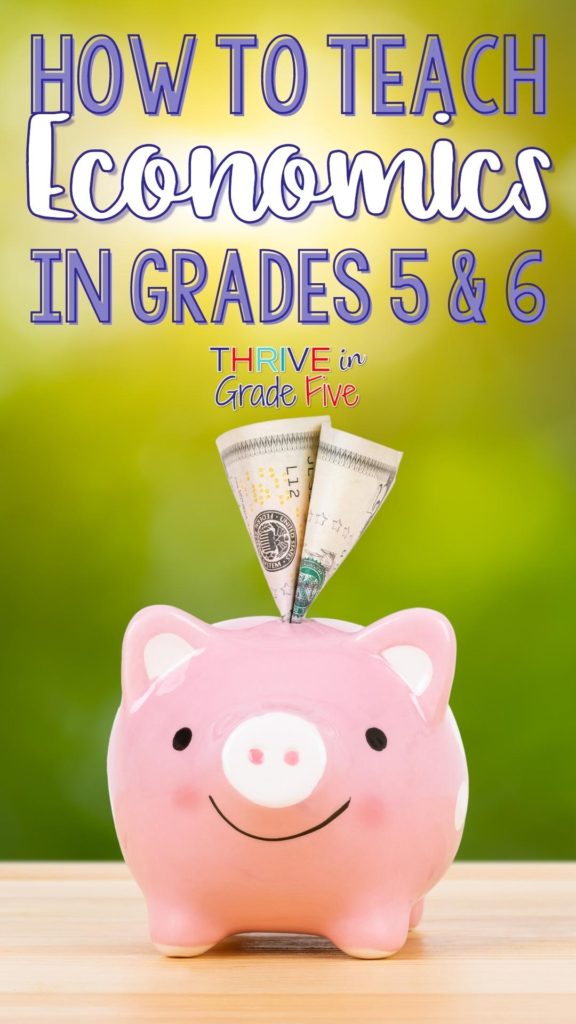
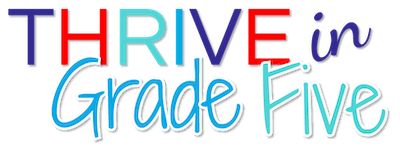


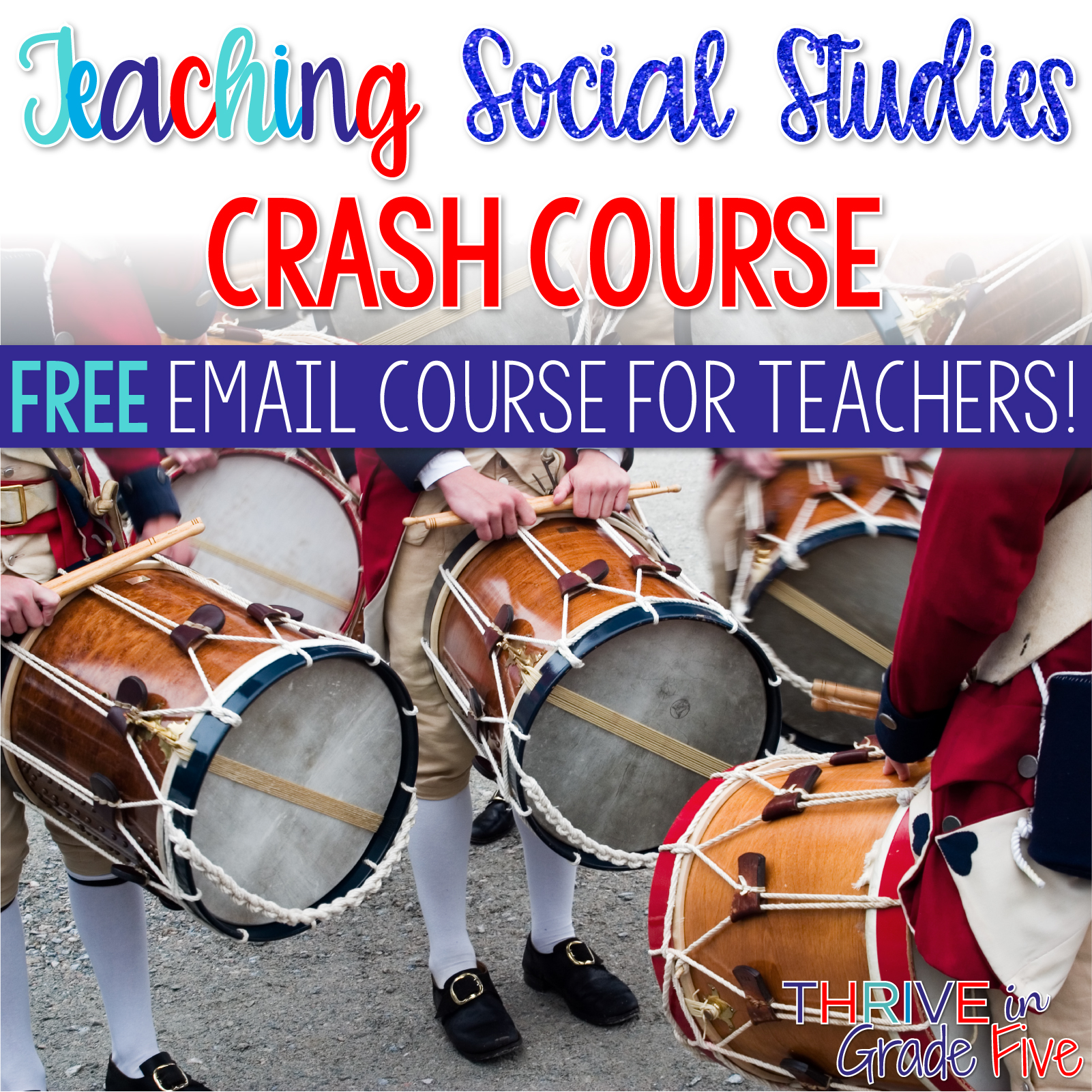



2 Comments
This unit looks amazing! Thanks so much!! 🙂
You are very welcome, Tara! Thank you for taking the time to share your thoughts 🙂